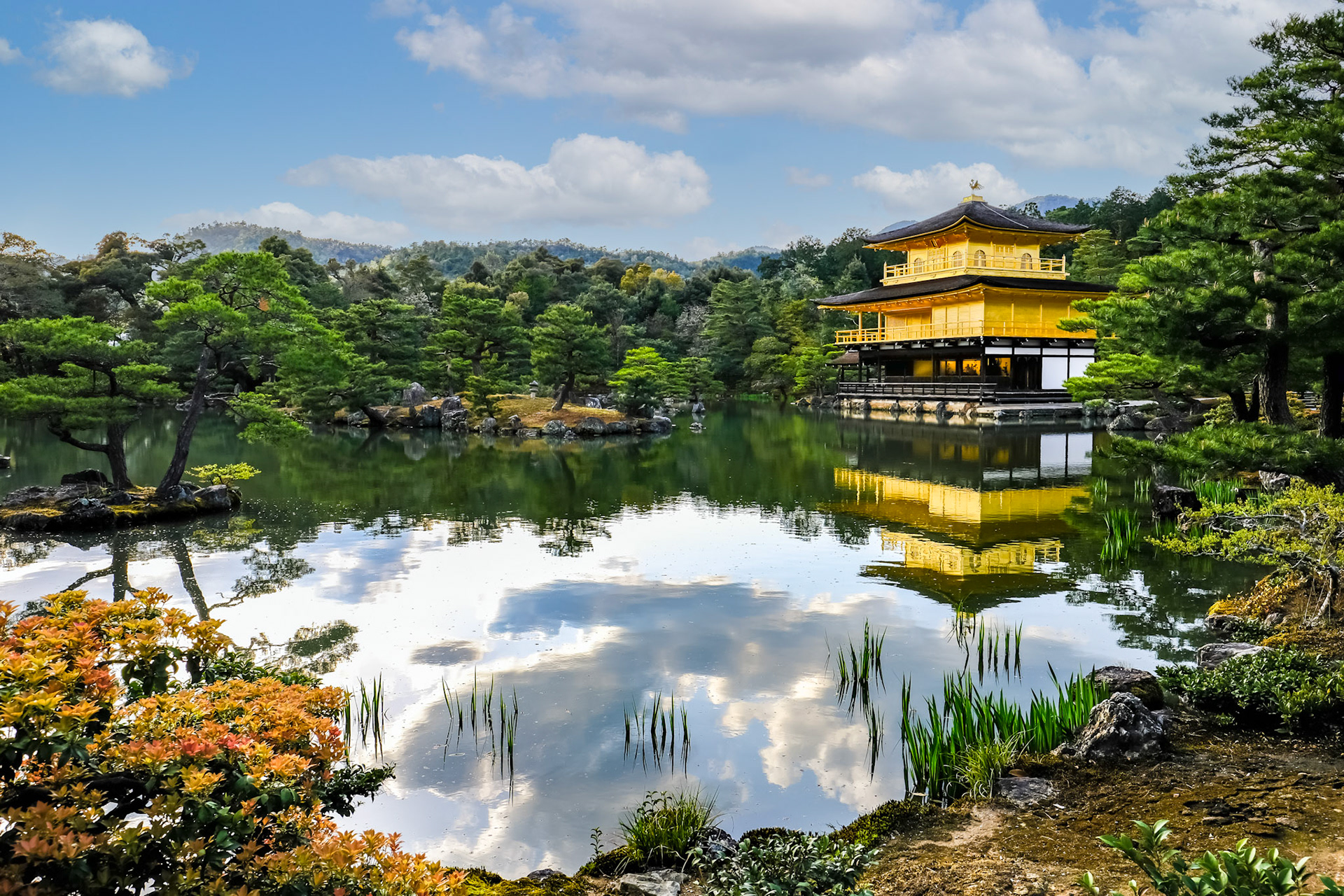Kinkaku-ji, also known as the Golden Pavilion, is one of Kyoto's most well known landmarks. Originally constructed in the late 14th century as a retirement villa for the shogun Ashikaga Yoshimitsu, Kinkaku-ji was transformed into a temple after his death in 1408. Despite being burned down in 1950 when a monk attempted suicide, the pavilion has been meticulously reconstructed in 1955, maintaining its historical splendor.
Located inside the Rokuon-ji temple complex, the Golden Pavilion's top two floors are covered in gold leaf. It is reflected in the serene waters of the surrounding Mirror Pond, creating breathtaking photo opportunities. Each of its three stories is designed in a distinct architectural style: the first floor in the Shinden style, reminiscent of Heian-period palaces; the second floor in the Bukke style, akin to samurai residences; and the third floor in the style of a Chinese Zen hall.

Kinkaku-ji covered in gold leaf

Kinkaku-ji reflected in the Mirror Pond
You may also like